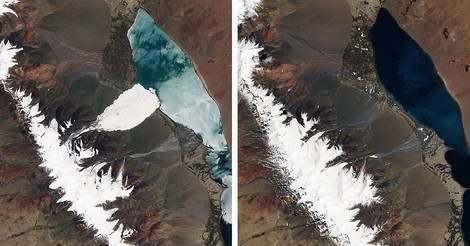Your podcast discovery platform
Curious minds select the most fascinating podcasts from around the world. Discover hand-piqd audio recommendations on your favorite topics.

piqer for: Climate and Environment Global finds Globalization and politics
I'm a freelance journalist, currently based in Madrid. I used to be a News Producer at CNBC in London before, but I thought a little bit more sun might do me good. Now I write for several news organizations, covering a range of topics, from Spanish politics and human rights for Deutsche Welle to climate change for La Marea.
Glaciers Are Collapsing In Mega-Avalanches Because Of Climate Change
Yesterday, the President of the United States, Donald Trump, said in an interview with like-minded journalist Piers Morgan that ice caps were doing great. Literally, he said they're "setting records". Record lows, Donald.
Glacial ice covers around 13 million square kilometers on Earth (that's roughly the size of the US and India put together). Ice caps and glaciers contain about 10% of all of the Earth's fresh water. And yes, they're dwindling, Mr. Trump. But there's another surprise (apart from rising seas, changing chemistry, polar vortices...) we might be in for.
In 2016, 247 million cubic meters of snow and ice collapsed from a glacier in Tibet, rolling downhill and killing nine people. Glaciologists were surprised because the glacier was flat (as in, not perched on a mountain slope), and they had only seen such an avalanche once before.
But then it happened again. In a different glacier. Three months later.
Glaciologists hadn’t quite believed that glaciers could behave this way, and suddenly they had witnessed two similar collapses in a year.
The culprit, researchers found in a study published this week, was climate change. The air is warming up fast in the dry Tibet plateau. That means more snow in the winter and more rain in the summer.
That water created crevices through the glacier and saturated the ground below, acting as a kind of lubricant. With more weight on top and less friction to hold the glacier in place on the bottom, it collapsed.
The Tibet glacier collapse is a wake-up call, researchers said, for areas more densely populated than Tibet. Glacier stability in other regions may also be compromised, and they may become more and more unpredictable as temperatures rise.
This article does a great job explaining how glaciers behave, and why different kinds of glaciers collapse differently. It's a short read, but really complete and relevant. Another good one from The New York Times.
